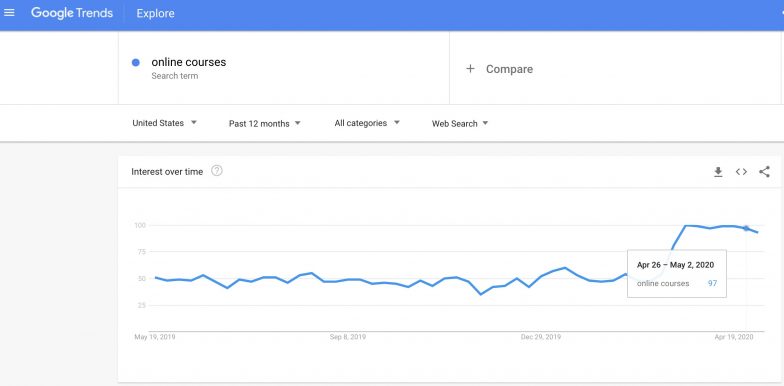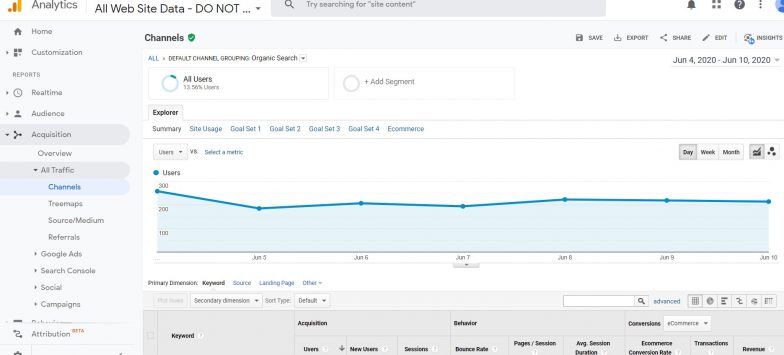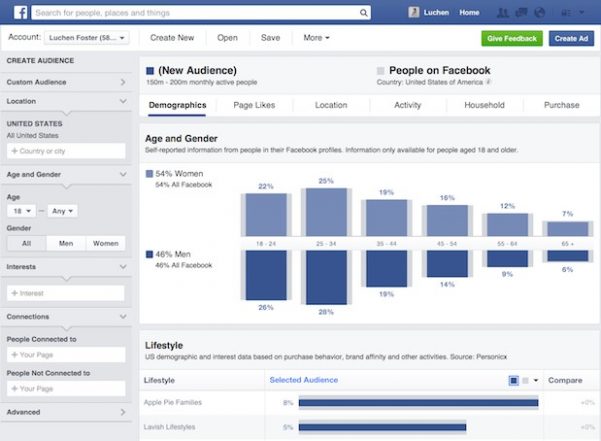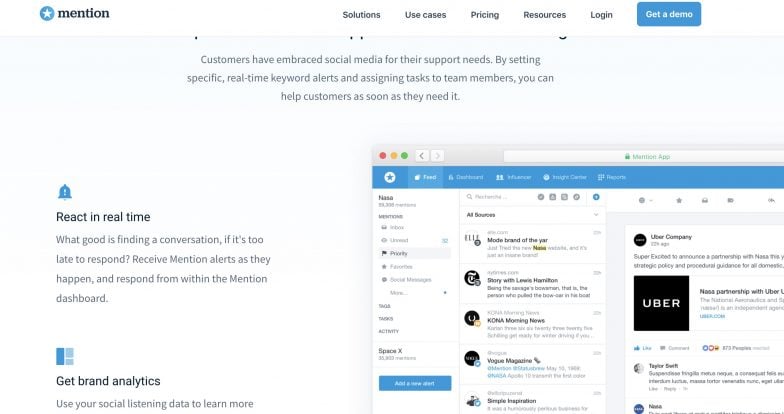How To Create a Winning Customer Insight Strategy
Matthew Turner
Updated by Tara Malone
How well do you know your customers?
It’s easy to say you know them, but do you have a first-rate customer insight strategy that drives your product development, marketing, content creation, and customer service?
It’s an overlooked area for most businesses. Most create a customer profile, and many know them fairly well.
But it’s rare to find a business with a first-rate customer insight strategy, and having one can give you a major edge over your competitors.
At Mirasee, we work with course creators from every industry you can imagine. Building the course is often the easy part. Consistently generating sales isn’t!
Yet this job’s made easier if you focus on your customer insights. Whether you’re just starting out and have only a few customers, or you’re well-established with thousands of them… your customer insights can unlock everything you need to improve your product development, marketing efforts, and ultimately sales.
Better yet, creating a winning customer insight strategy isn’t nearly as difficult as you might imagine. It doesn’t cost you much in the short term (time or money) yet allows you to save money (and time) in the long term – as well as improving your sales, productivity, and profitability.
In this article we’ll show you how to develop a winning customer insight strategy.
What is a Customer Insight Strategy?
Let’s begin by taking a quick look at what a customer insight strategy is and why it matters.
Customer insights refer to having a deep understanding of your customers. This includes their behaviors, preferences, wants, and needs.
You can obtain some of these insights by diving into data such as browsing history, purchasing patterns, conversions, ad response, website analytics, and any other KPI that gives you an insight into what your customers do, where, and when.
Yet this only gives you part of the picture. To truly understand your customer insights, you must consider less measurable aspects such as their demographics, opinions, questions, and engagement. This may include data you can measure (via a survey or lead quiz, for instance) but also involves you observing their questions, email responses, comments, and feedback.
A winning customer insight strategy allows you to communicate, engage, and provide relevant and valuable content, products, and services to those you serve.
Why Customer Insights are Important
Customer insights provide you and your business with an array of benefits.
Here are some of the biggest benefits consumer insights offer course creators and other business owners:
Helps You Develop Your Customer Profile

Your core customer profile/avatar plays a fundamental role in your business. No matter what industry you’re in or the size it may be, your customer is everything. You’re on a mission to serve them and solve their problem.
This is more important than ever as the world gets more and more crowded with competition.
Customer insights allow you to evolve, refine, and better appreciate who is part of your customer profile. The more customer insights you have, the better you understand:
- Where they are and how they consume information
- Core demographics
- Their motivations, key drivers, and biggest pain/problem
- How they currently solve this problem
No matter what your business is, it should revolve around your customer profile.
We show you how to create a customer profile in a separate guide, but it’s your customer insights that drive so much of this.
The best part is that they fuel one another. As your customer profile evolves, it shows what sort of consumer insights to gather. And as you gather more insights, the more refined your profile becomes.
Helps Refine Your Marketing Strategy
Your customer insights can redefine your entire marketing strategy and sales approach.
For starters, key customer insights help you better understand who your core competition is. This allows you to research and analyze your competitors, learning about what they do, what they don’t do, and how they market to their customers.
This, in turn, teaches you about your strengths and weaknesses, where there are gaps in the market, and new ideas to reach, engage with, and build rapport with your audience.
Yet your customer insights go way beyond analyzing your competitors.
It shows you:
- Where your potential customers are and how you can best reach them.
- What they consume, and how you can best engage/communicate with them.
- How they suffer, and what you can do to solve their biggest problem.
- Why they do what they do, and why they don’t do what they don’t.
This is what marketing comes down to. There is no all-in-one marketing solution. The marketing strategy you need is the one you need. What works for someone else may not work for you.
Customer insights help you find this.
It points you in the right direction, acting as a compass along the way.
Boosts Your Product Development
Whether you offer a physical product, digital version, or some kind of service, your goal is to solve a problem. Your customer has one, and you have something to help them.
Customer insights allow you to create, refine, and develop the products your audience needs.
Whether you’re building a new product from scratch or already have an existing one, it’s consumer insights that show you what works. Through real data and feedback/observations, you’re able to hone in on the most important features.
- Is anything missing that would provide value?
- Are some features unnecessary or no longer needed?
- Is anything confusing, unclear, or causing an issue?
- What’s working, and how can you leverage this further?
Every year, Apple releases new versions of their phones and laptops. Each time they do, they promote new features. Some of these new features are due to technological advances, but many arise from customer insights gathered through feedback, observations, and analyzing data.
Their existing customers literally show them what’s working and what’s not.
Well, this is true for most companies.
Product development comes, not through board meetings and moments of inspiration, but rather customer insights that clearly show what works and what doesn’t.
Enhances Your Customers’ Experience

As important as these other benefits are, this final one may be the most valuable of all because it involves all of the above.
The experience you give your customers is everything.
The journey you take them on is what distances you from your competitors.
It’s your customer experience that leads someone from general awareness to loyalty, trust, and advocacy.
Again, it’s your customer insights that shine a light on the experience they need to take. Through customer insights, you can craft a memorable experience that takes someone from a lead to a loyal customer.
We dive into what customer experience is and how it works in another guide, but the point is simple: experience is everything!
Every person you interact with goes on a journey with you. You get to choose to take control of this or not. It’s customer insights that allow you to, crafting a memorable experience they’ll treasure for a lifetime.
Benefits of Customer Insights for Course Creators
At Mirasee, we cater to and work with online course creators. We’ve helped people create online courses in every industry imaginable, and it’s customer insights that fuel success each time.
Here are a few key benefits consumer insights can provide course creators:
- Course Creation: Customer insights can literally show you what type of courses to create for your audience. This may help you tweak existing courses, or build entirely new ones. Your sole aim as a course creator is to add value to your students. Through their insights, you can consistently achieve this.
- Course Building Platform: Choosing the platform to host your course can often be tricky. There are many available, and it’s often hard to know which is the right one. Again, customer insights point you in the right direction, showing you which platform your students will find most useful.
- Pricing: Another dilemma for most course creators is choosing how to price your course. It isn’t about how you value it, but rather how your students will. You need to find a pricing level that isn’t so high it puts them off, but not so low that they perceive it to be poor quality. Your consumer insights guide you toward the right price for you, your course, and, most importantly, your students.
- Marketing and Promotion: How to market and promote your course boils down to who your audience is and where they are. Customer insights help you hone in on the right platforms, ad setups, messaging, branding, and content delivery.
- Service Development: Many course creators begin with a single online course, but soon see the value in developing a Membership Site, Group Program, Mentorship or Coaching, and even Consulting and Speaking. The hard part is knowing which avenue to go down. Once more, customer insights lead the way.
- Community Development: Whether you build a membership site or not, having a strong, engaged community is important in today’s hyper-connected and competitive world. Consumer insights show you what sort of community to build, how to manage it and fuel it with content, and which of your students will find it most valuable.
Now that you know some of the benefits of using customer insights, let’s now turn our attention to creating an effective customer insight strategy.
How to Develop a Customer Insight Strategy

Whether you’re a course builder or not, the process of building a winning customer insight strategy remains the same. Here are the steps you need to take, tailoring each one to suit you, your product, and your audience.
Step 1: Know Who’s Involved in Your Customer Insight Strategy
Who’s involved in this process? Is it just you? Are there other people on your team?
How about other stakeholders, such as customers, mentors, peers, and focus groups?
It’s good to know who’s part of the process before you think about starting it. This allows you to ensure communication remains positive and on-point at all times. Your role is to direct this process from the beginning until the end.
Take control and own that now.
Decide who is a part of this, and who is not.
Step 2: Answer These 6 All-Important Questions
Once you know who’s part of the process, you need to sit down and take the following into consideration.
WHY
Why are you doing this? What’s your objective?
You need to have a good reason for creating a customer insight strategy. There’s no point in doing so just because you can. You need to take the results into account and use them to positively grow.
So, what’s the purpose of all this? What’s your main goal?
WHEN
As soon as you know your goal and purpose, it’s important you put a date on it.
What’s the timeline? When will you begin, and when will you aim to complete the process?
These dates may change, but it’s vital you create a timeline upfront. Not only for your own benefit but so you can communicate with other stakeholders, such as customers, managers, mentors, and the like.
WHAT
There are two parts of the what:
- What constraints, barriers, and limitations do you face?
- What data do you wish to track, and how will you measure this?
No matter what your situation is, you will face certain barriers and limitations. Get clear on what these may be now so you can overcome them when they arise later.
While you do, get clear on what data you plan to gather with your customer insight strategy.
As we mentioned earlier in this article, there are many things you can track, such as:
- Demographic data
- Website traffic
- User behavior
- Opinions and feedback
- Conversion rates
What’s important here is to hone in on what you should track. The data you need to track depends on the goals you wish to achieve. All that matters is that you make this process work for you. Get clear on the data you need. Nothing else.
WHO
Most important of all, decide who you’re targeting with this customer insight strategy.
- Your existing customers?
- Potential new leads?
- A segment of existing customers?
- A specific demographic?
Again, the goals you set out to achieve direct who you target. Your entire customer base may be relevant, or maybe only a small section. What matters is that you’re crystal clear on who this is.
If you’re not, you run the risk of wasting time and losing money.
Step 3: Create Your Customer Journey Map
At this stage, you’re ready to create your customer journey map.
This is a general outline of the journey your audience takes with you from the moment they first come across you to the time they become a customer.
At this point, you do not need to have all the answers.
You’ll create a more detailed customer map over time.
Yet it’s important to have a general idea before you begin your customer insight strategy.
Ask yourself:
- Where does your customer enter the journey?
- What does their first impression look like?
- What touchpoints take place in the first 7 days…14 days…30 days…60 days?
- Where do they end up at the end of their customer journey?
- Who are they then compared to who they were in the beginning?
- Do all your customers go on the same journey, or are there different segments/paths?
The reason a customer map is important in your customer insight strategy is that it helps you fill in any potential gaps. And although some of your strategy may include surveys, much of it centers around observation.
What they do.
What they don’t do.
How they do it all…
Your customer journey covers every step they take with you. Once you’re clear on what this is, you can identify important parts where you can ask questions, gather data, and highlight important insights.
Step 4: Develop a Customer Insight Survey (and Other Deliverables)
The time has come to create the key deliverables of your customer insight strategy.
- Is there a survey or a feedback form?
- Will you run one-on-one calls or focus groups?
- Where are the key touchpoints to gather the most important data and insights?
- How will you involve your customers, when, and where?
Most customer insight strategies include some form of survey. Again, how long and detailed this survey is depends on you, your product, and your customers. It could be as short as a few questions or a long, in-depth questionnaire.
Much of this depends on how engaged your audience is and how important your offer is to them.
The more they value your offer, the more time and energy they will commit to this process. So although you may want them to fill out a long questionnaire or have a one-hour phone call with you, does it make sense for them?
In other words, is it worth their time?
You may need to reward them with a gift, discount, or some other form of incentive. But again, not all your insights come from surveys. Many of them come from sitting back and observing what your audience does without any cue from you.
Step 5: Select the Tools You Will Use
The final step of this process is to select the tools you will use to gather the insights you need.
For more complex customer insight strategies, you may need to create a dedicated customer insights platform. For simpler strategies, you may just need a few new tools to add to your existing world.
Survey tools like Google Surveys, Survey Monkey, and Typeform or any Typeform alternative for instance, or interactive software like PureChat or OptinMonster can bring you closer to your audience and allow them to engage with you.
And then there are those tools that work behind the scenes, gathering key consumer insights as you sleep. We’ll dedicate a new section to these tools, as they can prove vital to creating a successful customer insight strategy.
The Best Tools for Customer Insights
As with most areas of your business, there’s no lack of potential tools you can choose from.
The tools for customer insights you use depend on your actual customer insight strategy.
You’ll need to hone in on the tools you need, and then ignore the rest.
Here are some of the most important tools for customer insights you may like to consider.
Google Trends

Google Trends offers you a great insight into the wider population and how they interact with certain terms, platforms, media, and questions. Although this may not provide you specific insights into your customers, it does give you a greater understanding of what’s happening in your industry.
For an in-depth guide on how to use Google Trends, read this article written by the ‘Hallam’ team. It shows you how to use Google Trends, and also uncovers some of its secrets.
When it comes to your customer insight strategy, Google Trends will, at the very least, guide you toward a clearer picture of who your audience is.
Google Analytics

Google Analytics allows you to get to know your existing audience, gaining an insight into how they navigate your website.
To some degree, you need to utilize Google Analytics as part of your customer insight strategy (or an alternative tool like Kissmetrics, HubSpot, or CrazyEgg). It’s simply one of the best ways to gain an insight into what your audience does.
For a complete guide on how to get Google Analytics working for you, see this guide written by the HubSpot team.
Facebook Audience Insights

Facebook’s Audience Insights is another useful tool to use in your strategy. Different from Page Insights, the Audience Insights feature gives you a report of your audience’s demographics by age, gender, relationship status, lifestyle, and job role.
Consumer insights like these can play a huge role in your messaging and marketing. A person’s age, for instance, can help you determine the kind of social media platforms to use. In addition, their job role and/or lifestyle gives you an insight into how much money they make.
This helps direct your pricing, level of service, and much more.
For an in-depth guide on how to use Facebook Audience Insights, check out this resource that the Hootsuite team created.
Social Mention

Social Mention is a free tool that provides you with a real-time analysis of your social media.
This includes organizing any social media mentions of your brand into a single stream, including hashtags, top keywords, and sites. All this gives you a solid insight, not only into how your social media is performing but also who is engaging with you.
This allows you to fine-tune your messaging, better learn about your most engaged users, and analyze who these loyal users also follow.
It’s a tool that can provide a lot of useful consumer insights for you to use in your strategy. To learn more about how it works, see this guide that the Social Mention team created.
Other useful tools to help you create your customer insight strategy include:
The tools for customer insights you use, although important, only matter if you have a customer insight strategy that supports them. So don’t get hung up on the tools you could use. Build the best strategy you can and the tools you need will become clear.
It’s Time to Create Your Own Customer Insight Strategy!
We live in a crowded world. No matter what industry you’re in, you face a lot of competition.
A large part of overcoming this centers around you getting to know you audience. This is why customer insights are so important to you, both now and in the future.
If you haven’t already started your customer insight strategy, now’s the time. Get clear on why you’re building it and figure out who you’re doing it for. Once you have those goals, you can focus on the data, measurables, and observations that give you the consumer insights you need.
Much of this begins with your Customer Profile. You first need to get to know who your customer is. Once you do, you can begin to build the products, online courses, marketing, and services that will serve them and set you apart from all your competitors.
If you need help creating you customer profile, we have a customer persona template you can use to get crystal clear on every detail about your one person. Click below to download it now.